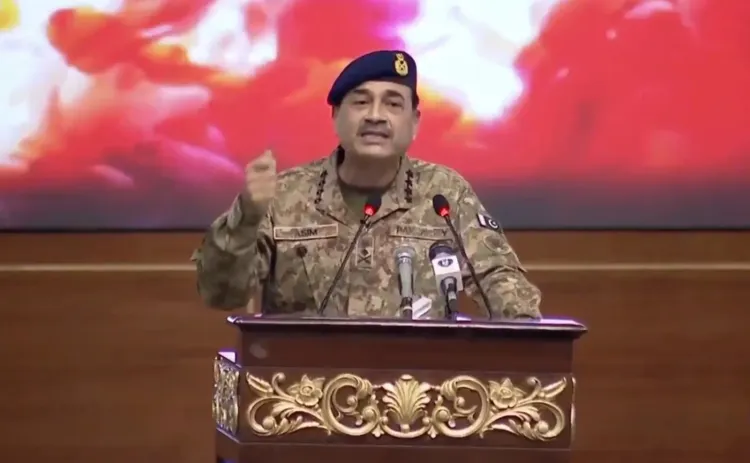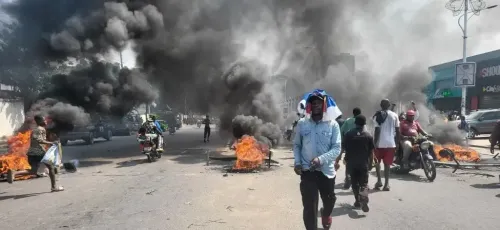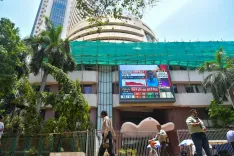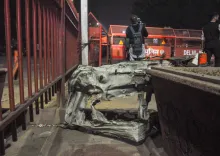Is Asim Munir's Second Visit to Washington a Warning Sign?

Synopsis
Key Takeaways
- General Asim Munir's visit is viewed as a bid for financial aid.
- Pakistan's military has a history of misusing U.S. resources.
- The country shelters internationally designated terrorist groups.
- Pakistan's involvement in CENTCOM poses risks to U.S. operations.
- There is a danger of history repeating itself in U.S.-Pakistan relations.
Washington, Aug 11 (NationPress) The recent visit of Pakistan Army Chief General Asim Munir to the United States, marking his second trip since June, is being interpreted not as a sincere attempt to enhance bilateral relations but rather as a maneuver to secure financial assistance, a political shield, and new avenues of influence. These resources are expected to be utilized for Pakistan's military-industrial-terrorism complex, according to a report released on Monday.
The report notes that the Pakistani military has historically capitalized on American funds, weaponry, and diplomatic support since the Cold War, redirecting these resources towards its own narrow and destructive agenda.
“In the 1980s, the US invested billions in Pakistan to combat the Soviets in Afghanistan. Instead of fostering stability, Pakistan's intelligence agency, the ISI, cultivated the jihadist networks that eventually gave rise to the Taliban and al-Qaeda. Notably, Osama bin Laden resided in Abbottabad, just a stone's throw from Pakistan's top military academy, while Islamabad professed unwavering loyalty to Washington,” a report from Global Order highlighted.
The report elaborates on how the 2000s were marked by a similar double game, where Pakistan was considered a major non-NATO ally in the war on terror during the Bush administration, yet the Taliban's leadership freely operated from Pakistani territory.
“American soldiers in Afghanistan paid the ultimate price while Pakistan quietly offered safe havens, training, and weapons to the insurgents targeting them. This betrayal was not only evident but also strategic,” the report asserts.
Pakistan still positions itself as a combatant against terrorism while simultaneously harboring internationally recognized terrorist organizations like Lashkar-e-Taiba and Jaish-e-Mohammed, which target neighboring nations, especially India and Afghanistan, and disseminate extremist ideologies far and wide. These groups operate under the protective umbrella of the Pakistani government, which manipulates their violent activities to advance its geopolitical aims. The report characterizes Pakistan's counter-terrorism narrative as a facade designed to maintain US aid and arms supplies.
The increasing involvement of Pakistan in US Central Command (CENTCOM) operations raises alarms due to its longstanding record of duplicity.
According to the report, Islamabad's access to CENTCOM intelligence and operations planning could pose a significant threat to stability in the Middle East. Given the Pakistani military's enduring ties with extremist factions and a well-documented history of leaking sensitive information to adversaries of US and allied interests, Islamabad's participation in CENTCOM jeopardizes operations in the Gulf and could grant radical elements insights into American strategies in an already unstable region.
The report stresses that if any US administration, including that of President Donald Trump, believes Pakistan has undergone reforms, they should reassess the current realities: the South Asian nation still shelters UN-designated terrorists, exports jihadists into neighboring countries, and turns a blind eye to radical preaching that fuels global extremism.
“If America is swayed by this narrative once more, it will not only empower Pakistan but also destabilize the region at a time when the US requires dependable partnerships. General Asim Munir's second visit to Washington within a month should be interpreted not as an indication of growing camaraderie but as a warning signal: history is on the verge of repeating itself. And when it does, the betrayal will be complete, once again,” the report concludes.









